Gardening Tasks To Do in April
The joy of seeds sprouting in trays and garden beds. The colors popping from tulips and redbuds and cherries. The vibrant green of tiny tree leaves. The return of butterflies and bees. Spring is here and our gardens are full of potential. Here are reminders and recommendations for April garden tasks.
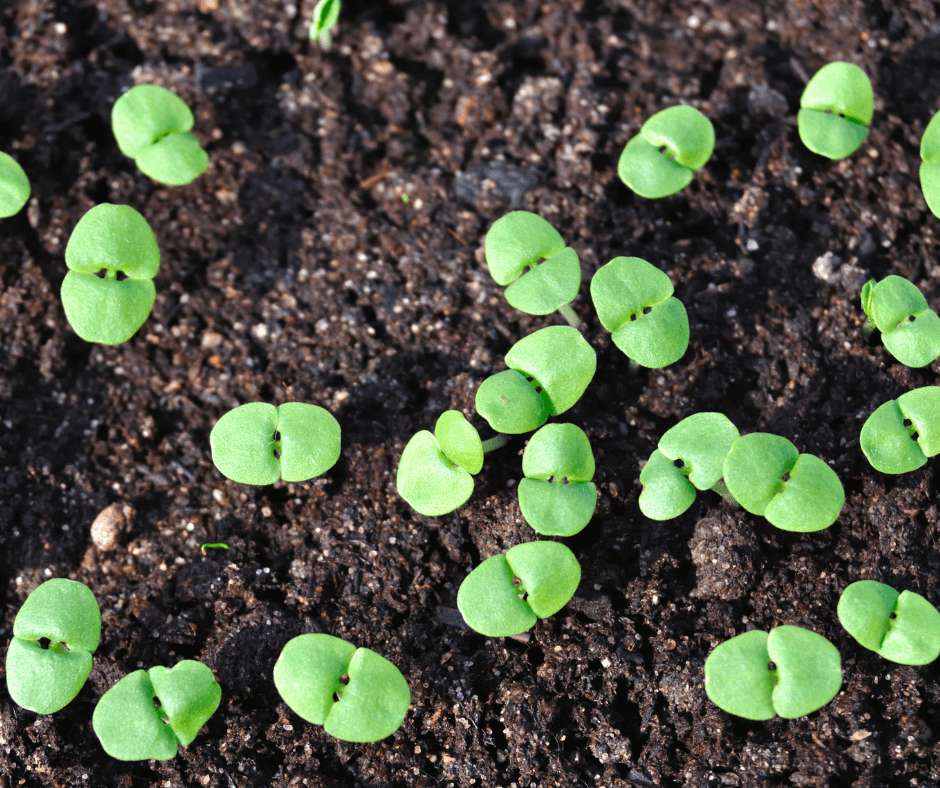
Who Is This For?
These recommendations are for gardeners interested in growing healthy food and healthy ecosystems. We use organic methods, get the whole family involved, and work with nature using ideas from ecology and permaculture.
We live in the Northern Hemisphere in USDA Zone 7. These recommendations can be adapted to many gardens in Zone 6-8. (Not sure what your zone is? Find your USDA zone here. Not in the U.S.? This pdf comparing international zone systems may help.)
Quick 3 for Busy Gardeners
If you have limited time for gardening, I suggest you focus on these three areas:
- Add edible perennials.
I adore plants that come back year after year, providing food for us and habitat for wildlife with little additional help from me as the gardener. Each spring, I add a few new ones so that our lineup of “returning players” gets better every year. Start with classics like asparagus, rhubarb, strawberries, and blueberries. Last year, we added sochan, June berries, elderberry, wild plum, and a couple new strawberry varieties. This year, it’s persimmons, cherries, and apples. Perennial Vegetables by Eric Toensmeier is a great source of inspiration. - Use “focus areas” to clean and plant.
Leaf litter and stalks from last year’s plants are important shelter for pollinators and other beneficial insects. Don’t wipe them all out with one clean sweep. Leave the leaves where possible. Start by cleaning up a small focus area where you’ll be planting spring crops. You can get these areas well-weeded and mulched to prevent overwhelm later. - Grow your own salad.
Leafy greens pack a punch when it comes to healthy eating, and spring is the perfect season to start growing them. Start a salad garden in a corner of your garden, a raised bed, or containers. You’ll be starting to harvest in about a month.
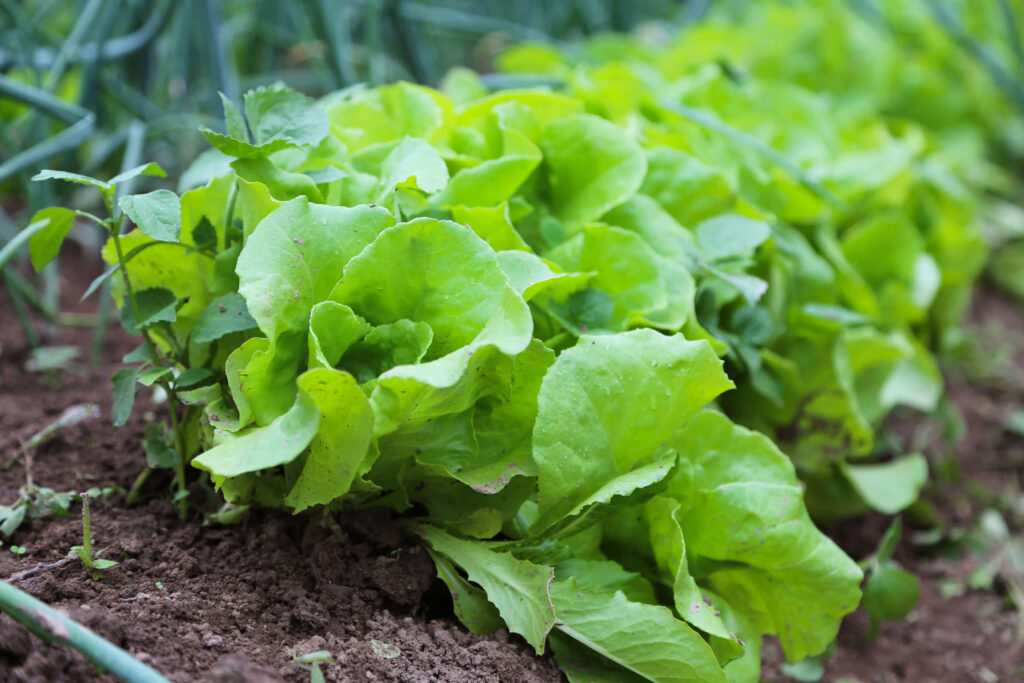
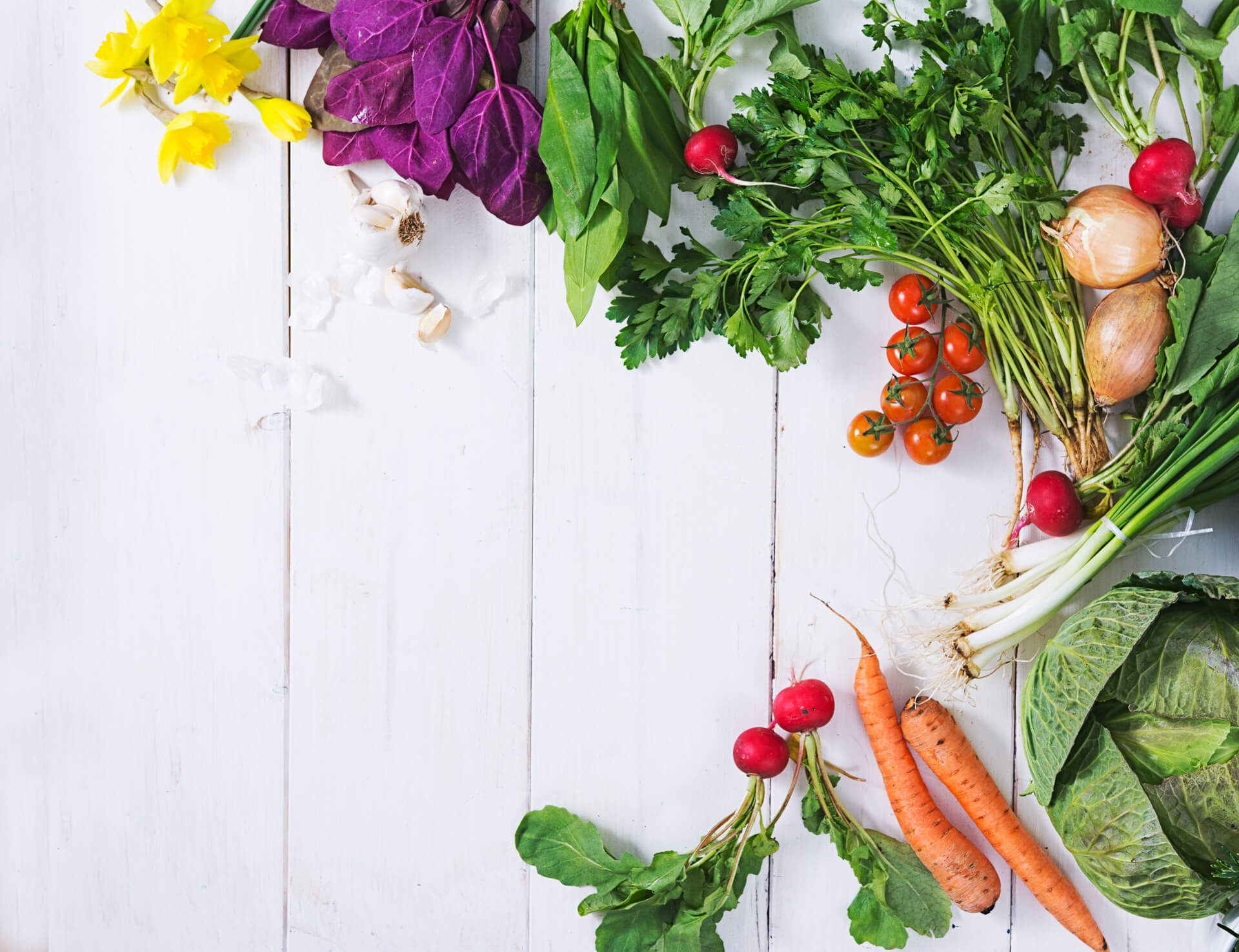
A CLASS FOR NEW GARDENERS
Start Your First Garden
Short, actionable lessons to help you grow healthy food and flowers using sustainable methods. No green thumb required.
Here are some of the other tasks we’ll tackle in April.
Plants
- Direct sow cool season crops.
Plant seeds or starts directly into your garden for cool season crops including leafy greens, beets, peas, radishes and others. - Protect prize crops from pests with row cover.
Row cover like Agribon and Remay aren’t just for season extension. They provide a great physical barrier to protect young seedlings from the butterflies that lay eggs that become hungry, hungry caterpillars. Cover the plants from the beginning to be sure they don’t have caterpillars already on them. As the weather warms, check them regularly in case they need irrigation. And be sure to remove the cover for any plants that need to be pollinated when flowers start to bloom. - Plant potatoes.
Turn an area of your lawn into a quick and easy potato bed with Ruth Stout’s approach. - Continue starting and caring for warm-season crops inside.
As your last frost date approaches, you can begin to take them outside and harden them off with longer periods of time outside. - Update your Planting Plan.
If you used the Planting Planner spreadsheet or created a plan of your own, you know when you “should” plant…but life happens. If you missed your ideal date or if your early seedlings didn’t do well, don’t stress. Planting dates are really planting windows. 😉 Update your plan and try again. If you worry it’s getting late for a cool season crop in your region, you can always test it out while also saving some seed for a fall crop - Visit plant sales (with a plan).
Enjoy your local plant sales to find interesting plants and meet interesting gardeners. I like to make a plan around on what I’m looking for so that I don’t go overboard. If time allows, talk to the farmers and volunteers about the plants they’re selling. Often, they have valuable experiences and are willing to share!
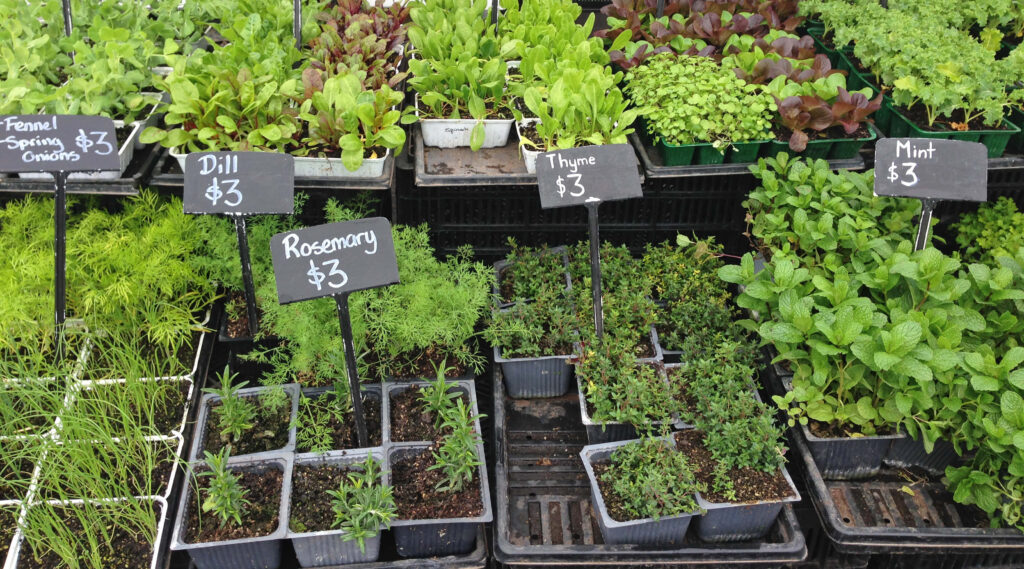
Soil & Compost
- Do a soil test.
Ever peppered on soil amendments hoping for the best? There’s a better way. Get a snapshot of your soil’s pH and nutrient levels with a soil test. Your local cooperative extension service likely offers free or low-cost tests. You’ll be able to make informed decisions about fertilizers, which saves you money and prevents excess nutrients from leeching into waterways. - Harvest compost to use in beds and potting mixes.
Time for your compost to shine! Depending on your system, you may have an entire bin ready or be able to harvest from the center/bottom. If compost will be mixed into the soil or a potting mix, sift out the large, un-decomposed chunks. If you don’t want to sift, you can use partially-finished compost on top as a mulch. - Don’t work in wet soil.
April showers bring May flowers, but they do mean you have to stay out of the garden some days. Don’t dig, till, or even walk on wet soil. This can harm the soil structure, cause compaction, and create clods. - Really want to put a few plants in on a muddy day?
If you have a no-dig bed or one that’s already prepared, you can. Just be sure to distribute your weight by walking on top of a couple boards placed on the surface. - Add soil building plants to your garden. Use cover crops in areas where you’re not actively gardening to build soil in place. You can also grow plants that produce lots of leaves that you can mow or cut to use in your compost. Think wheat, alfalfa, borage, comfrey, kale and others.
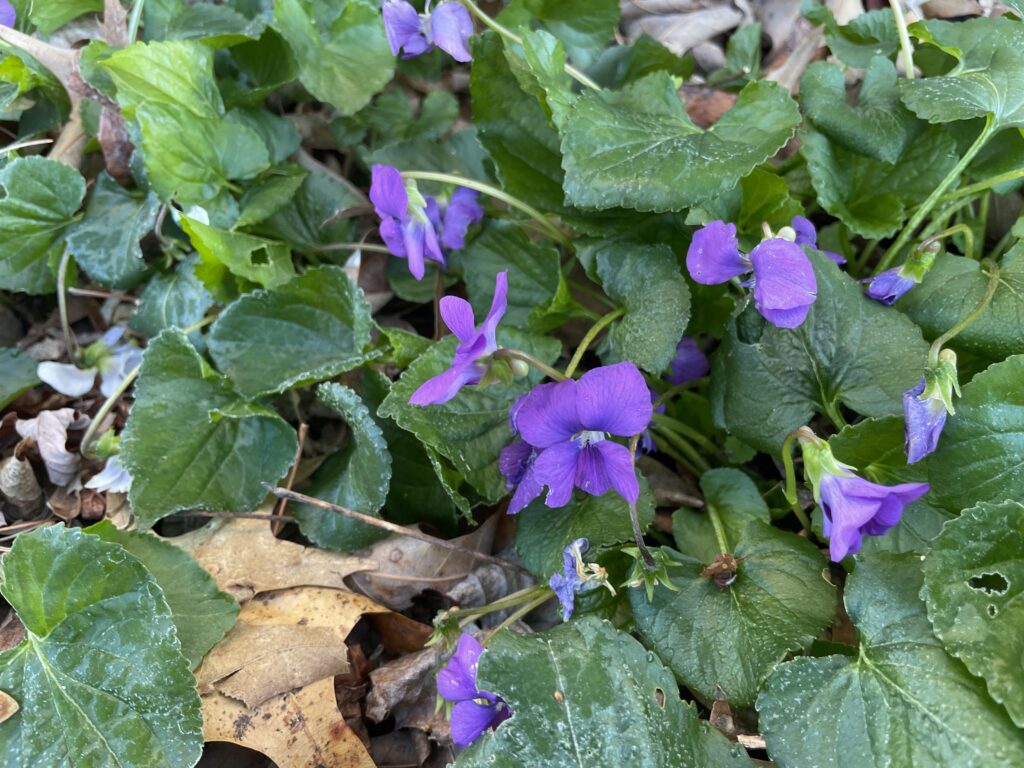
Wildlife
- Welcome lawn “weeds” and wait to mow.
The violets, clover, dandelions and other flowers in your lawn are helpful food for bees. You can help by practicing a No- or Low-Mow Spring and consider shrinking your turf or transforming it into a native meadow. - Plant natives for caterpillars and songbirds.
The best way to support songbirds is to have more caterpillars. And the best way to support caterpillars is to grow their food – native plants. - Continue to put up nesting boxes for birds and bees.
Since dead standing trees are rare in our yards, it can be helpful to provide nest boxes for birds and nest sites for pollinators. - Listen and watch for amphibians.
Frogs, toads, and salamanders are emerging from their winter rest to find mates. If you have a pond in your garden or nearby, you can look for eggs. Toads lay spiraling stings of eggs, frogs lay clumps of individual eggs, and salamanders lay eggs in clumps with a protective gel around the whole mass. On rainy nights, you might even see salamanders crossing the road – be careful not to squish them!
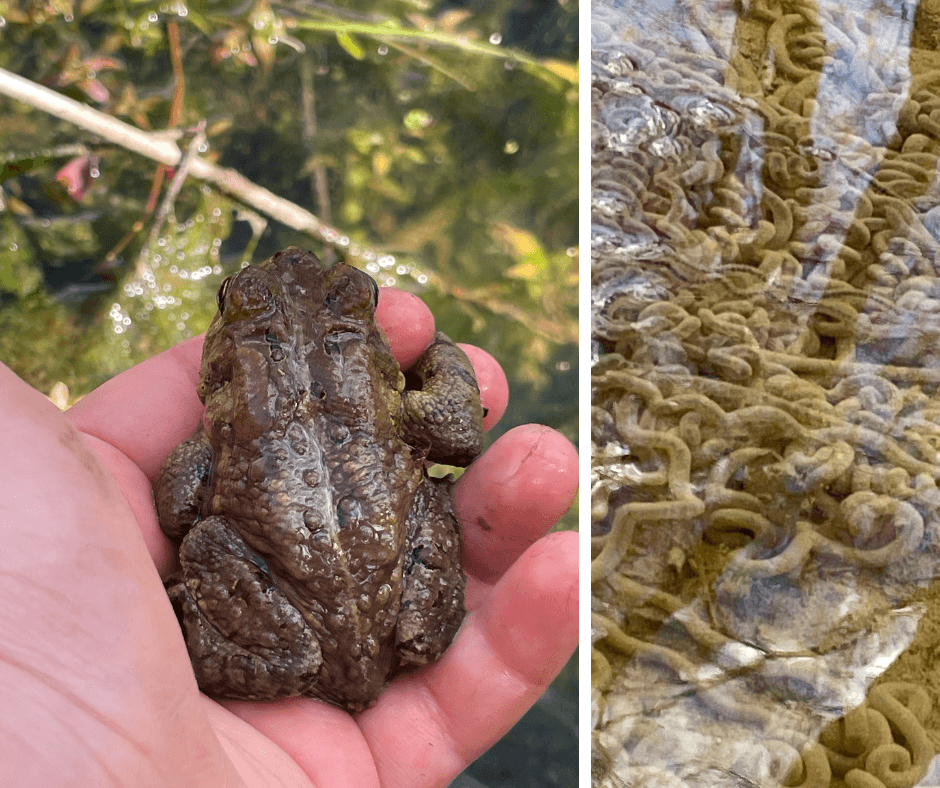
We’d love to hear from you…
What tasks top your list in spring? Do you have practices that set you up for a successful gardening season?
Join the conversation.
Comments are hosted inside our private community. It’s easy and free to join.
Already a member?

